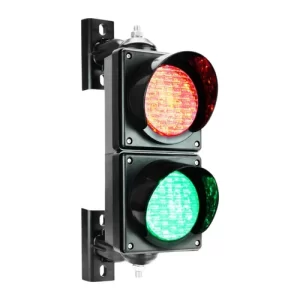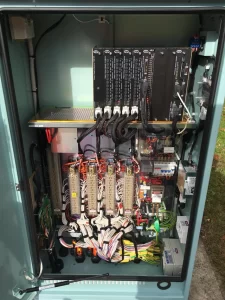Reducing the Carbon Footprint: Energy Efficiency and Traffic Signal Controllers
We all have a role to play in fighting climate change globally, and the transportation sector is no different. A powerful energy saver and carbon footprint reducer that is seldom brought up in the conversation about being more eco-friendly — traffic signal controllers. A basic knowledge of these controllers would be essential for energy efficient cities and better urban planning. With this paper, the concept will be energy efficiency in traffic signal controllers and we are going to elucidate strategies that with technological improvements form an even basis for another step forward towards cutting carbon emissions.
about being more eco-friendly — traffic signal controllers. A basic knowledge of these controllers would be essential for energy efficient cities and better urban planning. With this paper, the concept will be energy efficiency in traffic signal controllers and we are going to elucidate strategies that with technological improvements form an even basis for another step forward towards cutting carbon emissions.
Why Energy Efficiency In Transportation Matters
Transportation is one of the largest sources of greenhouse gas emissions globally. In the cities, traffic jams only reverse out this and in addition increase fuel consumption as well as pollution. Reducing the environmental damageTo mitigate these impacts on global warming and money expending, cities should improve energy efficiency in moving people from one place to another.
Traffic Signal Controllers
Traffic signal controller is a capstone in transportation system designing which controls the movement of vehicles at intersections. Historically, these controllers have been designed to minimize the propagation delay of traffic, but also heavily influence energy usage. Traffic signal controllers can help save fuel and lower emissions by optimizing signal timings, thus reducing the amount of idling.
Control Description / Analysis of Strategies for Energy-Efficient Traffic Signal Control [HF2a]
There are several strategies which can be adopted to improve traffic signal controllers’ energy efficiency:
Synchronization: Synchronizing traffic signals on corridors minimizes the stops and starts for vehicles, improving traffic flow efficiency and reducing fuel use.
Adaptive Control: It is one step further in what a real-time adaptive signal control system does to increase energy efficiency minimize the delay and fuel consumption, by adjusting signals timings based on actual traffic conditions.
Utilismart Software — Pedestrian Detection: Integrating pedestrian detectors into traffic signal controllers guarantees people crossing only when and where necessary, considerably saving vehicle stops otherwise.
LED Traffic Lights: Less energy is consumed on the whole at intersections with LED traffic lights when compared to traditional incandescent (light-bulb) lighting.
Innovations in Energy-Efficient Traffic Signal Control
And, advancements in technology have improved the energy efficiency of traffic signal controllers even more.
Enabled Vehicles: Traffic signal controllers can talk with enabled vehicles so that lights adjust more accurately and prevent needless stops-and-starts
Smart Grid Integration- Real time traffic signal controllers can be integrated with the smart grid system helping in dynamic energy management such as optimizing growing electric demand and intermittent availability of renewables.
Advantages of Energy-Efficient Traffic Signal Controllers
While there are substantial benefits in terms of energy savings from the adoption of advanced traffic signal control techniques that rely on more efficient practices, these?
Lower Carbon Emissions: As energy-efficient traffic signal controllers components reduce fuel use and idling so cars release fewer carbon emissions.
Better Air Quality: Reduced car emissions mean better air quality which directly supports public health and enhances life-quality in our towns.
Long-term financial benefits: Using energy-efficient traffic signal control systems will reduce the electricity bill of municipalities, thus a long run there are savings in costs.
Conclusion
Sustainable urban transportation systems depend on energy efficiency and intelligent traffic signal controllers. The CO2 emissions of cities can be decreased without affecting the traffic flow by adopting energy efficient strategies and utilizing technological tools. Over time, as we continue to work on sustainability in urban planning and development, the impact of traffic signal controllers upon our greenhouse gas emissions will only grow more crucial. Through collaboration and advancement, we can envision future-proof cities that are both high-performing, adaptable and green for our children to inherit.

